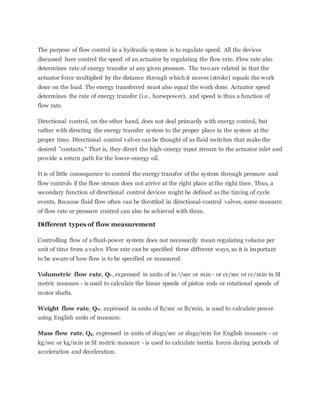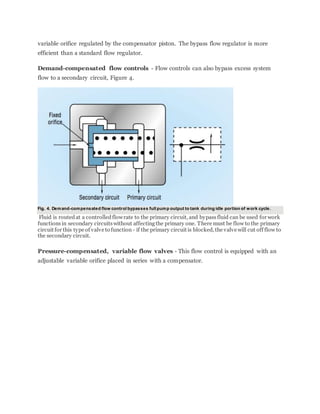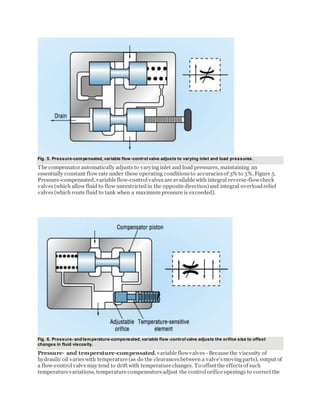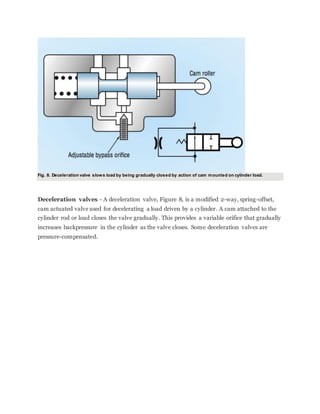The document discusses flow control in hydraulic systems. It defines three types of flow rates - volumetric, weight, and mass flow rates - and explains that flow control valves regulate the quantity of fluid flowing per unit of time for all three types. It then describes eight types of flow control valves: orifices, flow regulators, bypass flow regulators, demand-compensated controls, pressure-compensated variable valves, pressure- and temperature-compensated valves, priority valves, and deceleration valves. Each valve type regulates and maintains flow rates under changing pressure or temperature conditions.






